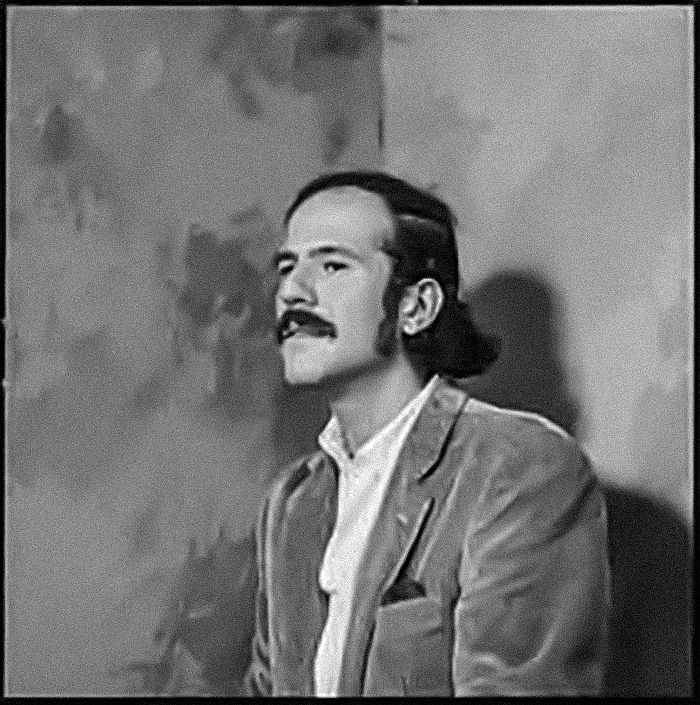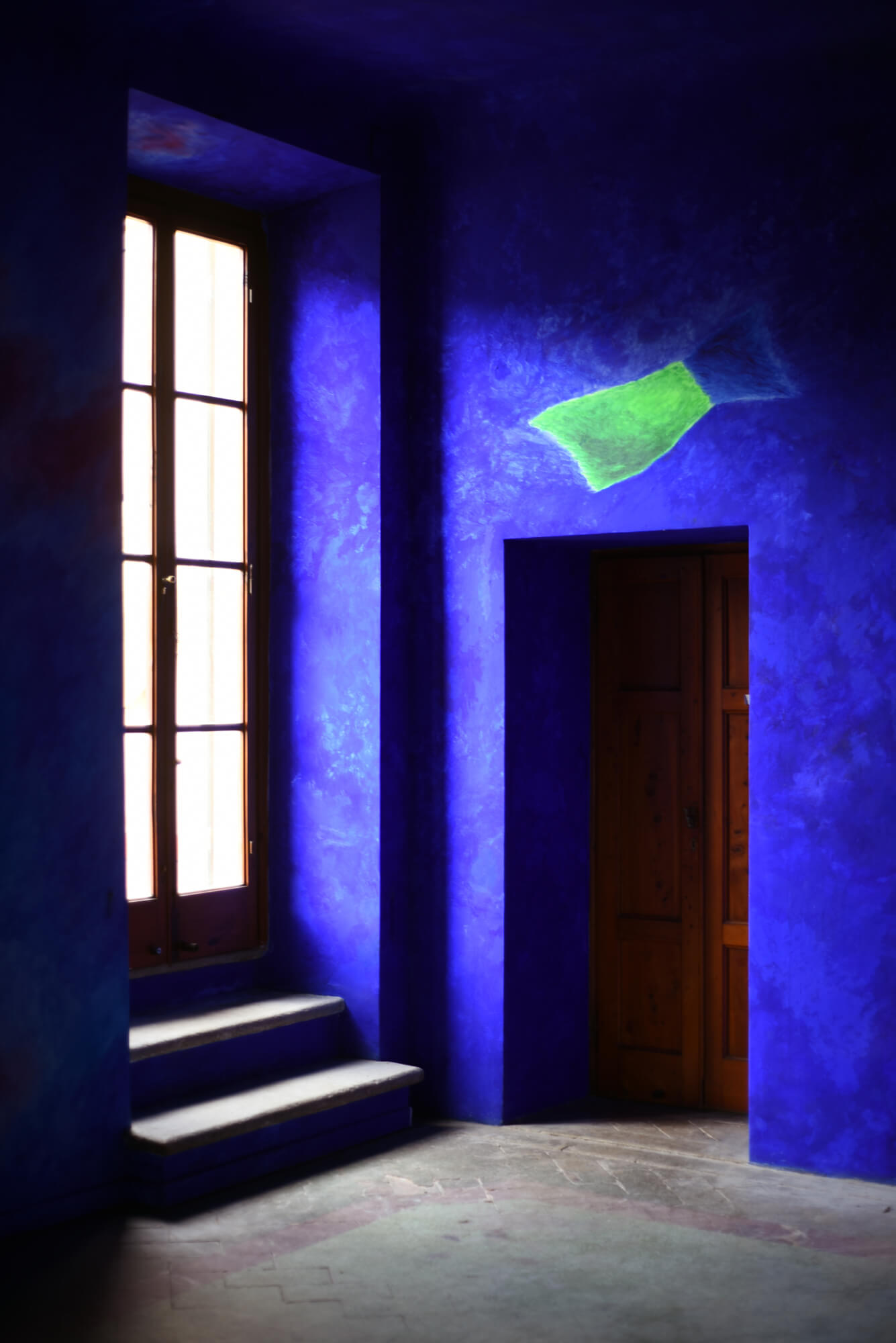Nicola De Maria (Foglianise, 1954 – )
On the top floor of Villa Celle, a rectangular room opens, through two French doors, onto the north-facing terrace, offering views overlooking the greenery of the historic park, the architecture of the chapel, and the farm. The room stands out from the others for its lack of those 19th-century painted ceiling decorations, which characterize the other rooms on the top floor. In fact, only the floor maintains its original condition while the rest of the room was painted white many decades ago. The flood of natural light and the vastness of the empty space to be used undoubtedly influenced the creativity of Nicola De Maria, who took over this room for his 1982 work; the resulting “all-over” composition is particularly suited to the spiritual universe represented by the Turin-born artist, who makes specific reference to Saint Francis’ thought.
De Maria’s first step was to completely paint an old suitcase– with the same bright blues, greens, and oranges used throughout the rest of the space — and place it on the floor, as if the earthly possessions of Saint Francis were abandoned here.






